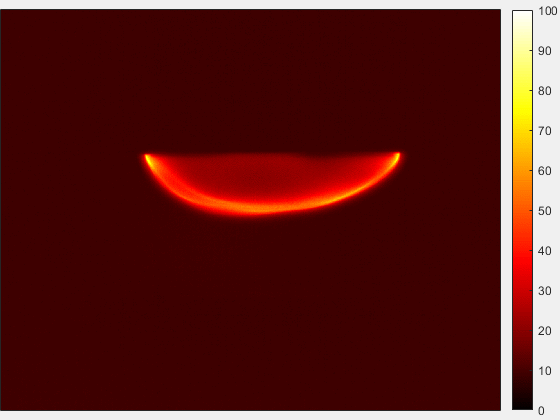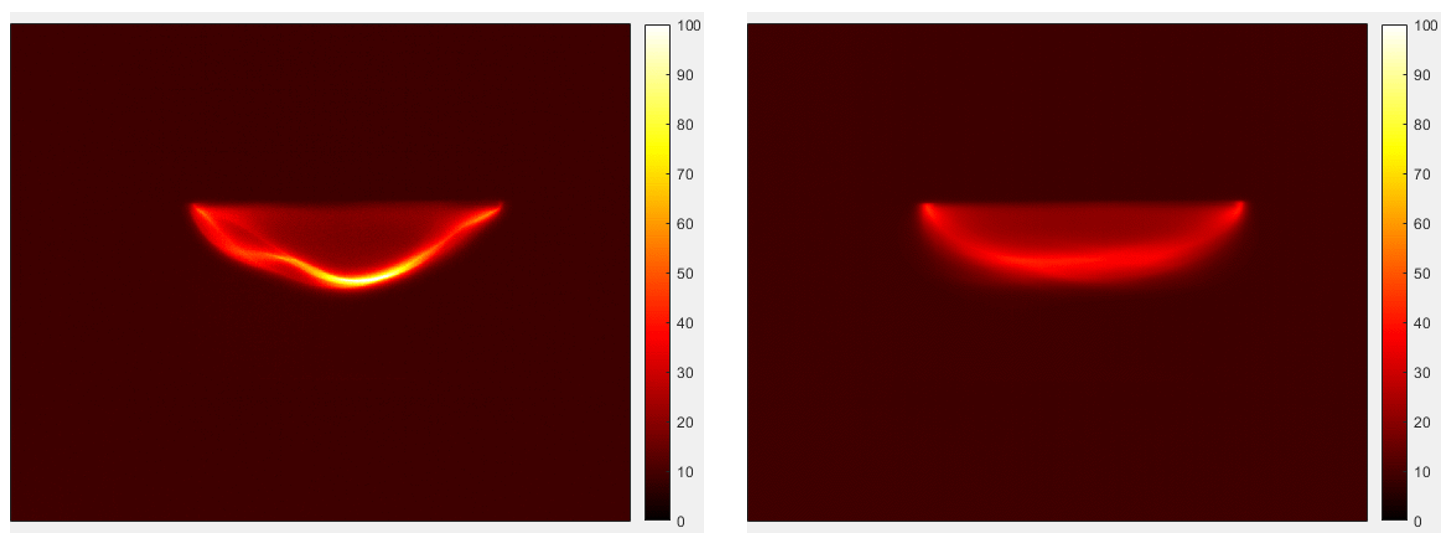
After several breaks caused by the Covid-19 pandemic, testing has commenced again at TU Berlin’s labs. At the moment, the turbulent counter flow diffusion flame setup is being investigated. One important metric for characterisation is the heat release distribution in the flow field. In order to capture the heat release, one can look at the short-lived intermediate OH* species that occurs in most combustion reactions. OH* emits light in a narrow band around 308 nm, which is in the near ultraviolet range. This is called chemiluminescence. Capturing light of this wavelength requires specific equipment (cameras, lenses) rated for UV radiation. Figure 1 shows the setup in TUB’s lab, which also includes a band-pass filter that cuts off light of other wavelengths.

With this setup, it is now possible to characterize the instantaneous heat release distribution as well as to determine the average heat release field. To this end, a series of snapshots is taken with the camera and then averaged over a longer period of time. This turns the chaotic turbulent behavior of the flow field into a more orderly distribution. Figure 2 illustrates this concept with examples of an individual snapshot and an average distribution from the same operating point. The procedure is carried out for a multitude of operating points characterized by thermal power and total strain rate.

In the next phase, the OH* measurements will be complemented by measurements of the flow field through Particle Image Velocimetry, and the soot loading via Laser Induced Incandescence.
